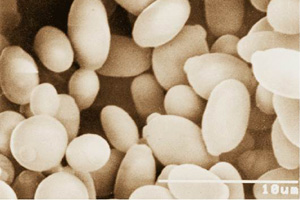| Ingredients used | Applications | ||
|---|---|---|---|
| Use of fungus bodies | Fungus bodies | Food, health food, functional feedstuffs, feedstuffs, drugs and fertilizers | |
| Extracted | Yeast extracts | Food, health food, drugs, cosmetics, pet food, feedstuffs, fertilizers and culture media for plants and microorganisms | |
| Refined | Amino acids | Health food, drugs and feedstuffs | |
| Nucleotides (RNA) | Food and health food | ||
| Saccharides (e.g. trehalose) | Food (sweeteners, preservatives, etc.) and cosmetics (for moisture retention, etc.) | ||
| Fat and fatty acids | |||
| Vitamins (e.g.Vitamin B family) | Health food and drugs | ||
| Provitamins (e.g. steroid) | Health food and drugs | ||
| Coenzymes (e.g. NAD and CoA) | Drugs (test agents), reagents and health food | ||
| GLUTATHIONE | Drugs, cosmetics and health food | ||
| Physiologically active substances | |||
| Enzymes (e.g. lactase) | Industrial applications for food production | ||
| Fermentation & metabolism | Fermentation & metabolism | Alcoholic beverages (e.g. beer, sake, fruit wine and whisky) | |
| Sweeteners (e.g. erythritol) | |||
| Esters | |||
| Organic acids | |||
| Seasoning (e.g. soy sauce, miso soy-bean paste and fermented seasoning) | |||
| bread, pies and cookies | |||
The yeast from which we produce extracts is primary yeast, which includes beer yeast as a by-product in the brewery industry, baker’s yeast grown with molasses and glucose, and torula yeast. Beer yeast and baker’s yeast fall under the category of Saccharomyces cerevisiae. Characterized by active alcohol fermentation, this yeast is used for brewing beer, wine and sake and for making bread. On the other hand, torula yeast, or Candida utilis, has poor alcohol fermentation. With its rapid growth, it is used for producing nucleic acids and GLUTATHIONE. This type is also known as the yeast that matures soy sauce. Yeast extracts are food produced from yeast through enzyme decomposition and extraction, autolysis or hot water extraction. In recent years, the natural, safe, and authentic qualities have been emphasized in the field of food industry. Those yeast extracts that add a wide variety of flavors and that are stable in terms of quality and supply earn high marks, and are rapidly achieving a presence in the market. This may partly explain why yeast extracts are now firmly perceived as synonymous with natural food ingredients.
Yeast extracts contain amino acids, peptides, nucleotides, saccharides, and limited quantities of vitamins and minerals. Given that these components have diverse functions, yeast extracts themselves can be seen as functional food. Today, with a focus on these positive effects, they are being used as health food and health food material.
